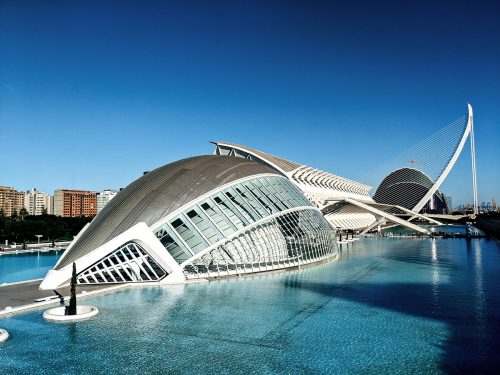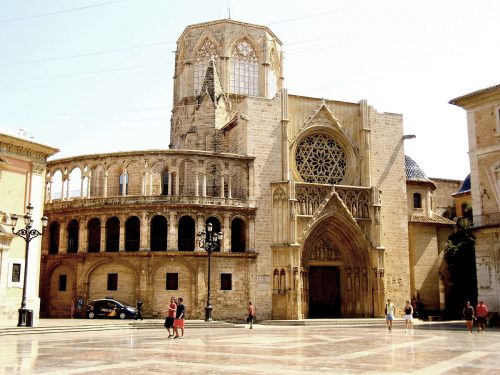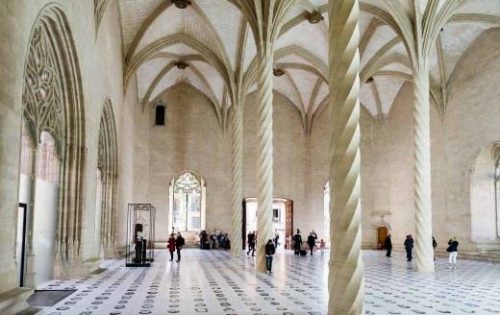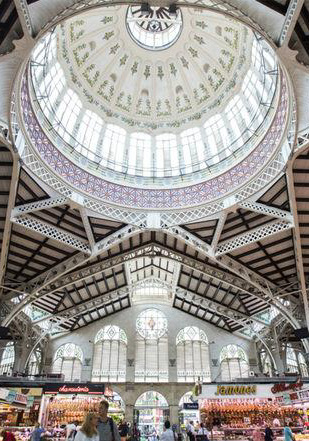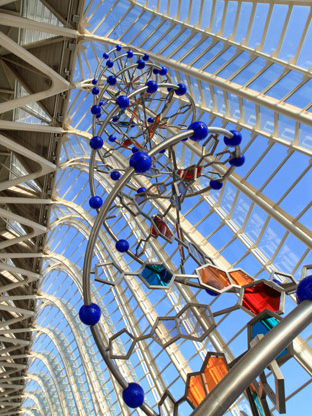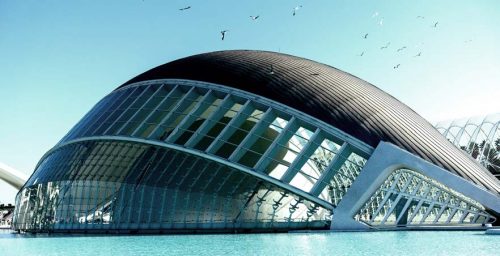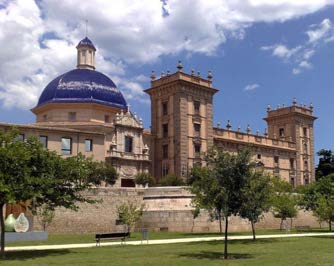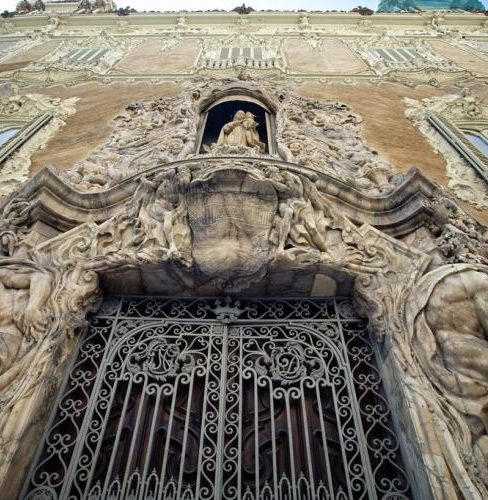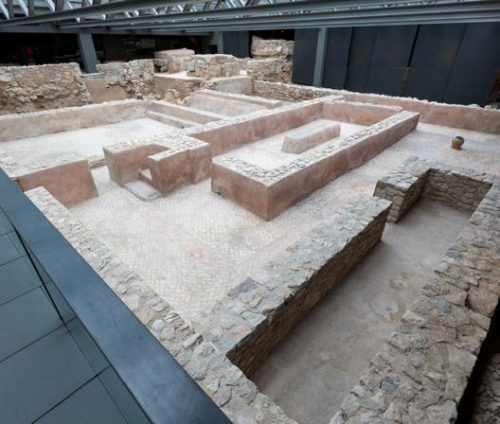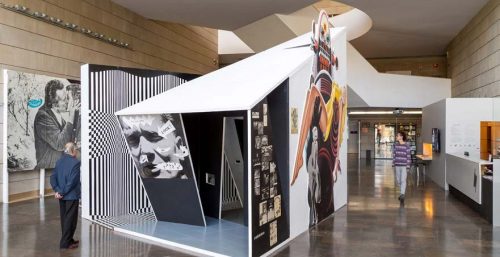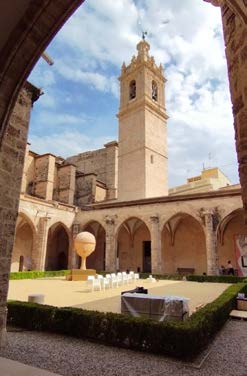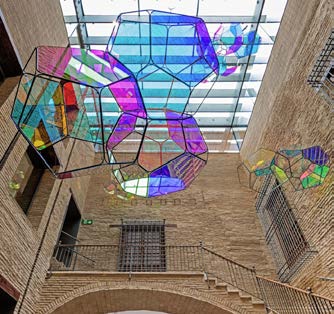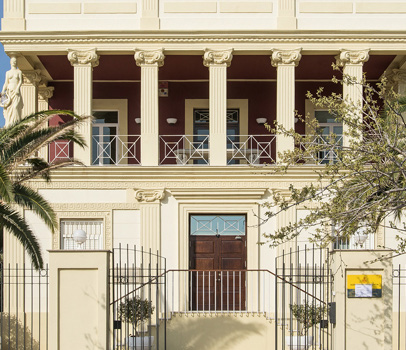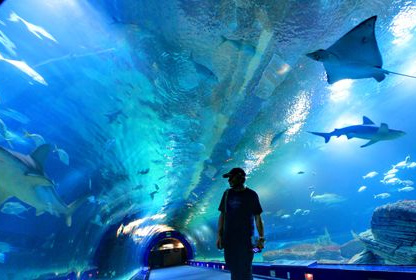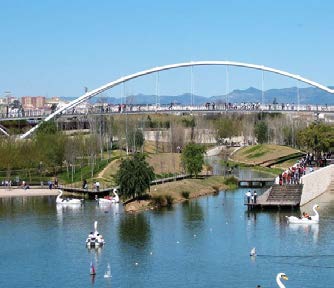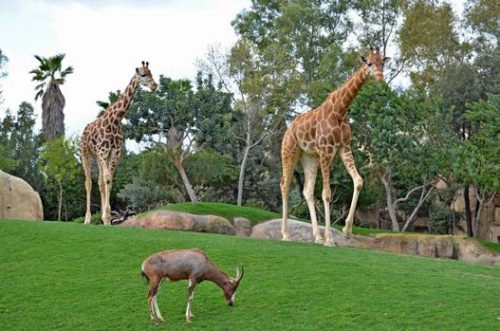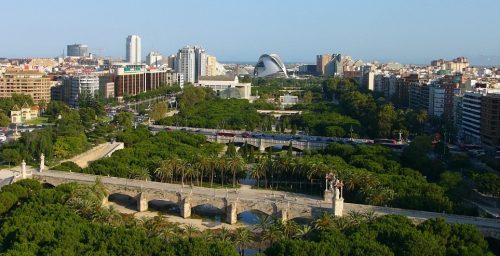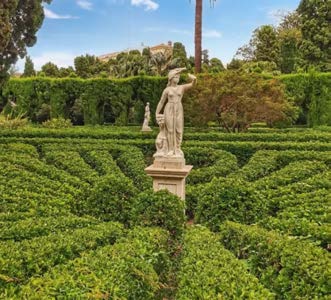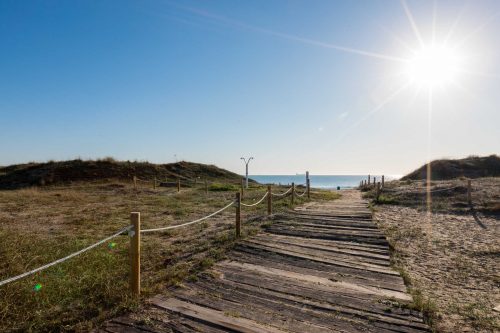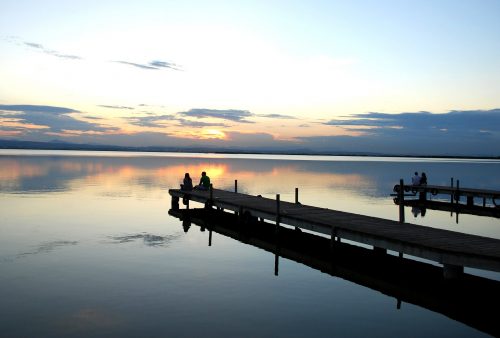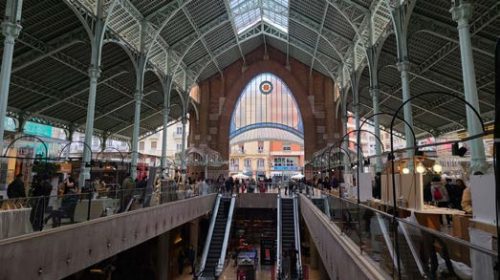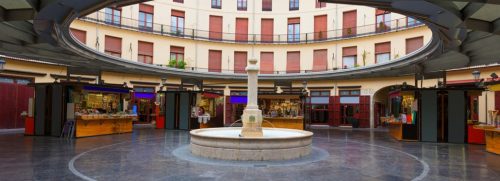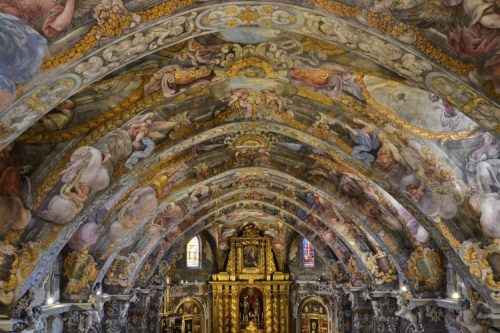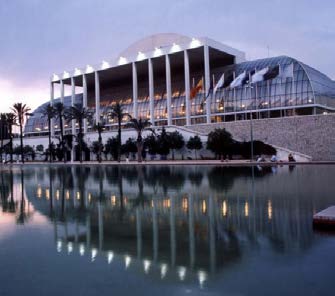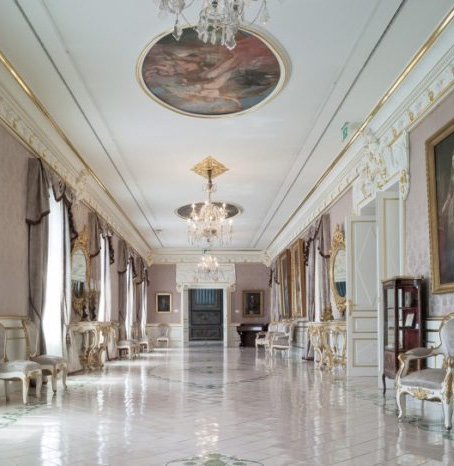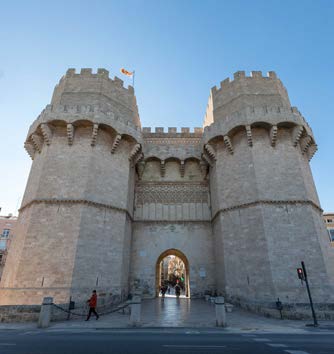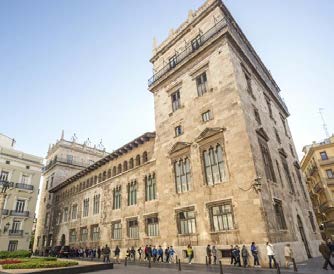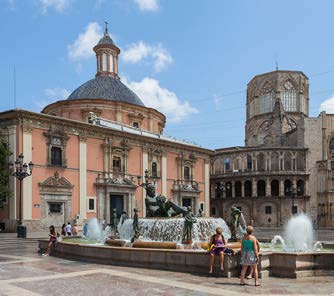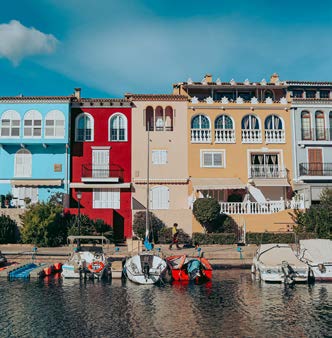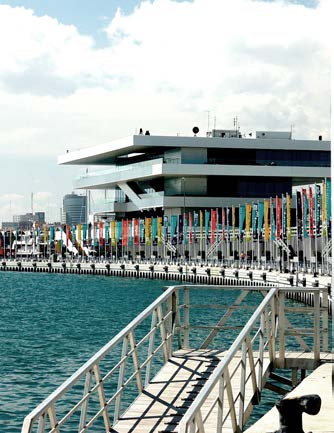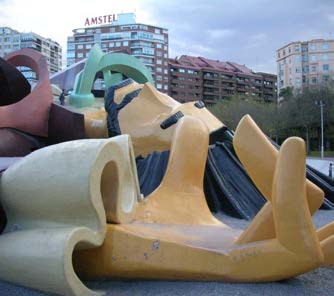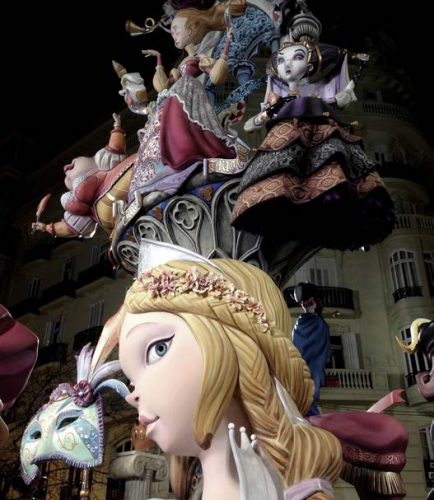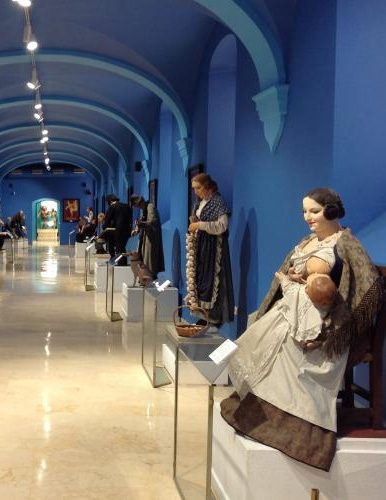What to see in Valencia?
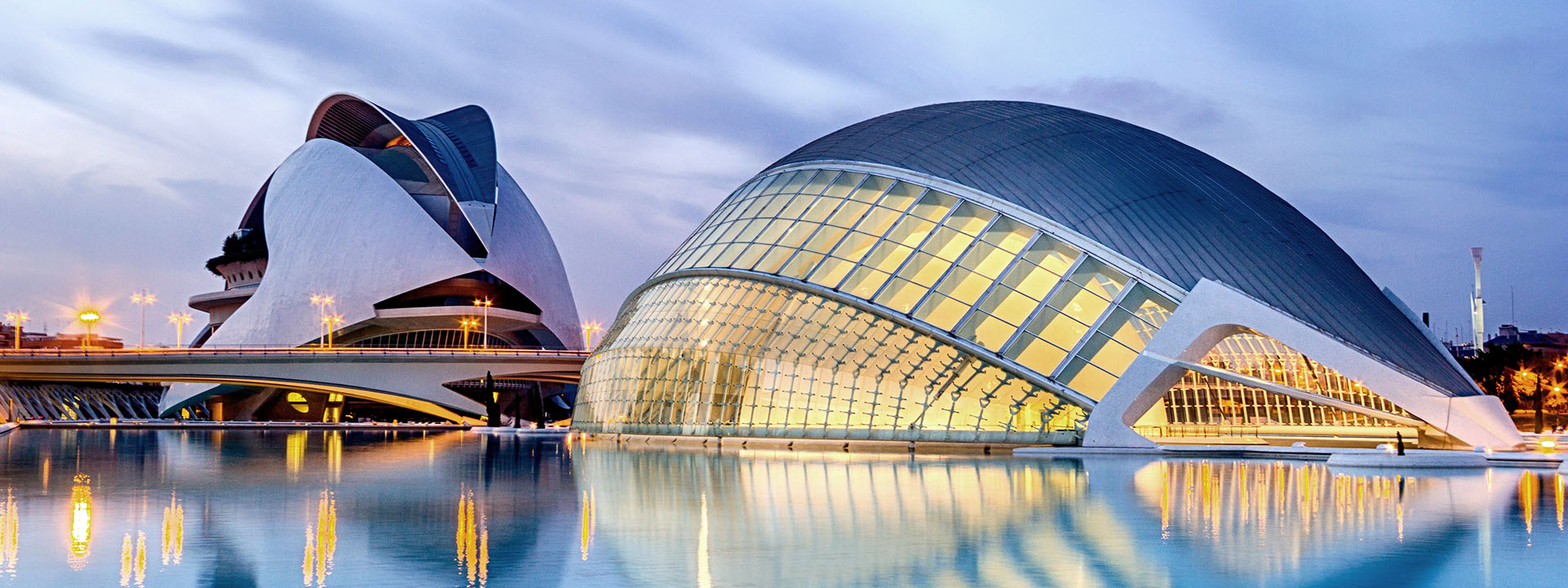
Discover the most beautiful places in Valencia
Culture in Valencia forms part of the essence of the citizen, manifesting itself in more than 60 cultural centres, including museums, monuments and multidisciplinary spaces. Valencia is rich in history, as well as in artistic production and craftsmanship, which is why it is possible to find contemporary art museums, guild museums, museums with gothic works or hidden treasures such as the venerated “Santo Cáliz” or “Holy Chalice”.
All of them are located in spaces of interesting and eclectic architecture, ranging from Gothic to the latest trends in contemporary architecture. Exploring them is discovering the soul of Valencia’s culture.
DISCOVER VALENCIA
1. EMBLEMATIC SPACES OF VALENCIA
2. MUSEUMS AND CULTURAL CENTERS
- Science Museum
- Hemisfèric
- Museum of Fine Arts
- Museo de la Almoina
- IVAM – Valencian Institute of Modern Art
- Carmen Center of Contemporary Culture
- Hortensia Herrero Foundation
- La Nau Cultural Center
- Blasco Ibáñez House Museum
- Colon Market
- Plaza Redonda
- La Estrecha
- Church of San Nicolás de Bari and San Pedro Mártir
- Palau de la Música
- Cervelló Palace
- Serranos Towers
- Valencia City Hall and Crystal Hall
- Palau de la Generalitat Valenciana
- PPlaza de la Virgen and Basilica de la Virgen de los Desamparados
- Alboraya
- The Marina
- Gulliver Park
1. Emblematic Spaces
Descubre los lugares más emblemáticos de Valencia y déjate sorprender por su historia, su singularidad y su belleza.
Ciudad de las Artes y las Ciencias
This is a large leisure centre for scientific and cultural dissemination that began its trajectory in April 1998 with the inauguration of the Hemisfèric. It´s surface area of 350,000 square metres has been conceived as a city within the city.
It is made up of a set of six areas located along the Turia riverbed. Designed by the Valencian architect Santiago Calatrava and inaugurated in July 1996, it is an impressive example of modern architecture. The city is made up of the following complexes: Palau de les Arts Reina Sofía, a hall for opera and performing arts; Hemisfèric, Imax cinema and Planetarium; Umbracle, garden for strolling; El Museu de les Ciències Príncipe Felipe, museum of applied science; Oceanogràfic, open-air marine park; Ágora, multifunctional space for holding events. Surrounded by attractive swimming pools, the city is a place to relax and stroll.
Visit the City of Arts and Sciences
La Catedral de Valencia
Construction began in 1262, on the site of the old main mosque, but it took several centuries to complete, so it mixes elements from the Romanesque, Gothic and Baroque periods.
On the outside, it consists of the Puerta de l’Almoina (Romanesque), the Chapel of Sant Jordi, the first chapel where mass was held, the Obra Nova in Italian Renaissance style, the Micalet – Miguelete in Valencian Gothic style, the Puerta de los Apóstoles, in French Gothic style and the Puerta de los Hierros, in Italian Baroque style.
As far as the interior is concerned, the Chapel of the Holy Chalice, the ambulatory, the main nave and side aisles in the Gothic style and the high altar are of particular interest.
Visit the Cathedral of Valencia
La Lonja de la Seda
One of the most emblematic buildings in the city, Gothic in style and declared a National Artistic Monument in 1931 and a World Heritage Site by UNESCO in 1996. It is a symbol of Valencia’s commercial prosperity in the 15th century. It consists of three distinct bodies: the Contracting Hall, the Tower and the Pavilion of the Consolat de Mar, articulated around the Patio de los Naranjos (Orange Tree Courtyard).
In addition to the beauty of the building, the gargoyles and sculptures are very characteristic, with a large number of obscene and lustful images, as well as strange creatures. The origin of these figures is not entirely clear.
Visit the Silk Market “Lonja de la Seda”
CENTRAL MARKET
The building was inaugurated in 1928, but since the Middle Ages this square already had a commercial vocation with open-air stalls, supported by a building constructed for this purpose in the middle of the 19th century. This building became too small and hence the need to build what is now the Central Market.
It brings together more than 300 fresh products traders. It is the largest market in Europe dedicated to the speciality of fresh products and is the first market in the world to have taken up the challenge of computerised sales and home delivery.
It is a delight to wander around the stands of fresh products and listening to the hustle and bustle of buyers and sellers. The market is an important economic focal point in the city of Valencia, both for the activity of the traders and for the numerous visits it receives and the events it organises.
2. Museums & Cultural Centres
SCIENCE MUSEUM
Located in the City of Arts and Sciences, this museum is captivating from the outside. A building of grandiose proportions and organic shapes that houses a multitude of activities and initiatives related to the evolution of life and the dissemination of science and technology.
The museum has become a benchmark for interactive science. Its main objective is to encourage curiosity and a critical spirit, trying to surprise and amuse the public through the contents it offers about the world of science, technology and the environment.
Moreover, its design holds a secret. On one side there is an exterior arch of 50 metres from end to end. Stand at one end of the arch and, thanks to its construction that channels sound waves, you will be able to hear a person perfectly from the opposite end.
HEMISFÈRIC
It is a unique and spectacular building, designed by Santiago Calatrava, which represents a large human eye, the eye of wisdom. This element symbolises the gaze and observation of the world that visitors discover through surprising audiovisual projections. It is the largest hall in Spain that houses three projection systems on a concave screen of 900 square metres.
FINE ARTS MUSEUM
This museum hosts the second largest collection of paintings in Spain, with pieces from the 15th to the 19th centuries, with rooms dedicated to Sorolla and to Francisco de Goya. The rooms of Gothic works are impressive and those of the painters and sculptors Pinazo and Benlliure are very representative of the Valencian school. The museum is also outstanding for its collection of paintings of this style in Spain. The Patio del Embajador Vich and the unpublished work of Velázquez are not to be missed either.
NATIONAL CERAMICS MUSEUM
In honor of the Valencian ceramic industry, the National Ceramics Museum-González Martí is located in what is considered the finest example of Baroque architecture in Spain, the Palace of the Marqués de Dos Aguas. The museum houses the largest national collection of ceramics from the 8th century to the contemporary era, including pieces by Picasso.
This museum is the result of the founder’s passion for ceramics and collecting, whose name it bears. It boasts an imposing facade that will leave no one indifferent, and its collection is simply marvelous.
Visit the National Ceramics Museum
ALMOINA MUSEUM
In the same space, vestiges from its foundation by the Romans in the 2nd century B.C. to the Middle Ages are preserved. This makes its archaeological value enormous. In fact, it is considered one of the most important archaeological sites in Europe. The Almoina Museum is at the same time a great three-dimensional history lesson: the best way to understand and imagine the evolution of the city.
Entering the museum and walking through its “streets” is a very important part of it. However, the setting in which it is located only enhances it: from outside you can see a glass-floored pool from which the ruins can be seen. And not only that: the Cathedral and the Archbishop’s Palace frame it, making the whole area well worth a stroll through the narrow streets that surround it.
IVAM – VALENCIAN INSTITUTE OF MODERN ART
It is the cultural emblem of the Valencian Community and one of the benchmark institutions for modern and contemporary art. Inaugurated in 1989 and designed by the Valencian architects Carlos Salvadores and Emilio Jiménez, it was built in the heart of the old town of Valencia, contributing to the revitalization of the Carmen neighborhood.
The IVAM was the first museum of modern art in Spain and is one of the few that has paid special attention to European historical avant-gardes. Its collection serves as a privileged foundation for revisiting the modern project of the 20th century, essential for understanding the 21st century.
CENTRO DEL CARMEN OF CONTEMPORARY CULTURE
The Centro del Carmen explores the contemporary world through a wide variety of formats and languages, making it one of the most highly regarded cultural institutions in Valencia. It accommodates absolutely everything: from urban art to an opera recital.
The building, declared a National Historic-Artistic Monument in 1983, is itself an architecturally diverse complex, much like its cultural offerings. You can stroll through a Gothic cloister or a Renaissance one, coexisting with remnants of an Islamic residence.
HORTENSIA HERRERO FOUNDATION
The Hortensia Herrero Art Center is born with a dual purpose: to share with society the most relevant international contemporary art and to contribute to making the Valencian Community a cultural and artistic destination of reference.
This new space brings together the private collection of patron Hortensia Herrero, which includes works by artists such as Andreas Gursky, Anselm Kiefer, Georg Baselitz, Anish Kapoor, or Mat Collishaw, among others. Some of these artists have created specific works that reside in specific areas of the Art Center.
LA NAU CULTURAL CENTER
The La Nau building has been the headquarters of the University of Valencia since its foundation in the late 15th century. It is an example of Valencian neoclassical architecture, especially in its facades and cloister. Its current architectural configuration is the result of a series of interventions that have adapted the building to its different functions and needs over more than five centuries.
Currently, La Nau, in addition to being the institutional headquarters of the Rectorate, serves as a Cultural Center, hosting a significant part of the cultural activities of the University of Valencia (exhibitions, theater, and music). It is also a space for meetings and discussions (conferences and congresses).
La Nau is also the headquarters of the Historical Library and houses the offices of various university services, including those related to the area of culture and heritage.
BLASCO IBÁÑEZ HOUSE MUSEUM
The reconstructed villa of the renowned Valencian writer, Vicente Blasco Ibáñez, nestled in the incomparable setting of Malvarrosa Beach and now transformed into a House Museum, houses his memories, personal belongings, and literary works.
It consists of three floors (Meeting Room, Museum, and Research Center) and a spacious garden, making the visit even more appealing due to the sense of tranquility and beauty it conveys.
3. Fauna, parks & gardens
OCEANOGRÀFIC
It is the largest aquarium in Europe, representing the main marine ecosystems of the planet. Each building is identified with the following aquatic environments: Mediterranean, Wetlands, Temperate and Tropical Seas, Oceans, Antarctic, Arctic, Islands and Red Sea, as well as the Dolphinarium, with 24 million litres of water and a depth of 10.5 metres. It allows us to get a close look at the behaviour and way of life of more than 45,000 specimens of 500 different species.
THE CABECERA PARK
In the western part of the city and at the foot of the Turia Gardens, we find one of the largest green areas in the city. It recreates the original landscape of the Turia, with water as the main feature.
With more than 330,000 square metres, the Cabecera Park is the ideal spot in the city if you are looking for a bit of fresh air, sport, a boat ride or simply relaxing on the sunny lawn with a good book. If you come with children, look out for the big pirate ship playground – they’ll love it!
BIOPARC
Located in the Cabecera Park, with an area of 100,000 m², is this innovative zoological park in which the barriers are practically invisible and the animals are free to roam at their ease. This park has the peculiarity of taking the visitor completely into the habitat of the animals and not the other way around, as it is the case with traditional zoos, a concept known as zoo-immersion.
The Bioparc aims to promote respect for animals and raise awareness among citizens about caring for the environment, committing to the education and conservation of animals.
The animals live together in the bioparc as they would in nature, in groups of the same species living together in the same habitat. They are separated from each other by natural barriers, stones, rivers, bridges, imperceptible to the eye of the visitor. Depending on which ecosystem you are in, you will be able to see the different animals that live there.
TURIA GARDENS
The Turia Gardens are one of the largest natural urban parks in Spain, a green space of more than nine kilometres that crosses the city with recreational, sports areas and romantic corners to lose yourself in. From the Cabecera Park to the City of Arts and Sciences, the Turia Gardens are an ideal route for runners, cyclists, families and nature lovers. Crowned by 18 bridges that bear witness to centuries of history, the old riverbed on both banks is bordered by some of the city’s main museums and monuments.
This immense garden is built on the old riverbed of the Turía river, which was diverted to avoid the continuous flooding of the city. After the great flood of 14th October 1957, which devastated the city, the Turia riverbed was diverted to the south of Valencia, leaving an important strip of land free that crosses the city from west to east, surrounding the historic centre.
As València is a flat city, the Turia Gardens is an ideal place for running enthusiasts or for cycling, segway or tandem tours. These small vehicles can be hired on the riverbed itself. Along the route there are also bars and cafés with large terraces where you can get your strength back.
The old riverbed also connects essential places to visit in València, such as the Serranos Towers, gateway to the old wall that embraced València and today a privileged viewpoint over the historic centre and gardens; the Valencian Institute of Modern Art (IVAM) or the Museum of Fine Arts, all located on the banks of the old Turia, which today can serve as a guide for an interesting cultural tour of the city of València.
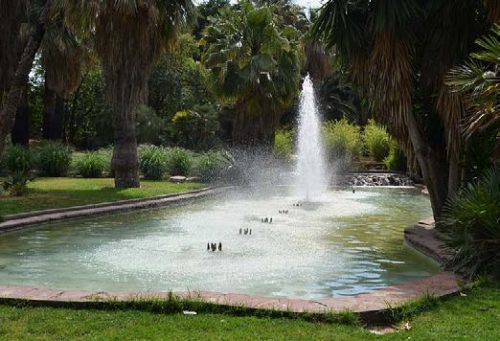
ROYAL GARDENS
Also known as Viveros Gardens, their origin dates back to the 11th century during the reign of the Moorish king Abd-Azlz. In 1903, it was donated to the City Council of Valencia to become a tree nursery.
The historical significance of this park, its vastness, rich landscaping, and the abundance of sculptural monuments and fountains that enhance its surroundings make it one of the most notable gardens in the city.
Within the gardens, you’ll find the Museum of Natural Sciences. Additionally, numerous activities, whether for children or cultural events, take place here. Strolling through these gardens is a return to tranquility and times past.
MONFORTE GARDENS
This beautiful spot in the capital of Turia is part of the National Artistic Treasure and is considered one of the most beautiful places in Spain. Its Italian sculptures, ponds, trees, flower areas, the small palace, and the rest pavilion stand out. Undoubtedly, it is a place to stroll and disconnect from the hustle and bustle of the big city.
Its origin dates back to one of the orchards in the extramural area of Valencia, specifically to the garden of Don José Vich, Baron de Llaurí. In 1941, it was declared a “National Artistic Garden.”
4. Sea, Beach & Nature
MALVARROSA BEACH
This is Valencia’s urban beach par excellence and is usually the busiest during the summer due to its proximity to the city. Its width, fine golden sand and easy access from all over the city make it one of the most popular beaches with locals.
The promenade that borders it, whose construction began in 1980, is home to numerous restaurants and cafés. It has lifeguard posts and an area adapted for bathing for people with reduced mobility.
The outdoor activities on offer are superb, with fitness classes, crossfit and everything else you could wish for. It also has a marked channel for surfing, paddle surfing, wind surfing, canoeing…
SALER BEACH
It is very well communicated with València, can be reached in just a few minutes by bus, car or bicycle, the distance from the city is one of its main attractions. Here you can breathe more tranquillity and quietness. The leafy pinewoods that surround it contribute to give it a singular beauty.
The main characteristic of this beach is its natural environment, its fine sand and its great extension. It is located at the southern end of the city, 15 minutes by car and only half an hour by bus from the centre of Valencia.
VALENCIAN ALBUFERA
About ten kilometres south of the city is the Albufera of Valencia. It is a Mediterranean ecosystem that combines wild beaches with dunes, forests, rice fields and a huge lake where you can go boating.
It is the largest lake in Spain and one of the most important wetlands on the Iberian Peninsula, with a surface area of around 2,100 hectares, to which must be added an extension of 14,100 hectares of marshland dedicated to rice cultivation. Due to its cultural, historical and ecological value, this natural area was the first natural park to be declared by the Generalitat Valenciana, in 1986. This is where paella was invented and where you can discover other culinary delights made with local products, such as all-i-pebre or llisa adobada (marinated mullet).
5. Other Places of Interest
COLÓN MARKET
Once a market, today it houses flower stalls and the best restaurants, but it has always been one of the most beautiful buildings in Valencia. The Colón Market, declared a National Monument, was designed by the architect Francisco Mora Berenguer at the beginning of the 20th century, making it one of the most representative works of Valencian modernism, reminiscent in some of its peculiarities of Gaudí’s constructions for Barcelona.
It is a large building of 3,500 m², divided into three naves, which closes its ends with two brick and stone gates in the form of triumphal arches. Its colourful façade is highly ornamented, with ceramic details typical of the area, as well as an artistic wrought-iron gate that surrounds the building
PLAZA REDONDA, ROUND PLAZA
t is one of València’s singular tourist attractions due to its unique construction. Refurbished in 2012, this place has become one of the most charming corners of the city. Surrounded by traditional craft shops and tapas bars on the ground floor, small stalls offering lace, embroidery, fabrics and souvenirs of València complete the offer.
The square can be reached by foot through four streets that converge in a welcoming space, full of light and from which, standing at the fountain in the centre, you can see a new and beautiful perspective of the baroque-rococo bell tower of Santa Catalina, which rises above the three floors of the circular building. And on the floor, a quote from the Valencian writer Vicente Blasco Ibáñez who refers to this place in his work Arroz y Tartana.
Visit the Round Plaza “Plaza Redonda”a
“LA ESTRECHA”
One of Valencia’s curiosities is located at Plaza Lope de Vega number 6, behind Santa Catalina and Plaza Redonda. This house once held the titles of the narrowest façade in Spain and one of the narrowest in Europe at 107 cm wide. However, a few years ago the interior walls were demolished to join it to the adjoining corner façade and convert it into a tasca on the ground floor.
The house has five floors and its former inhabitants only had room for two beds, two chairs, a table and a kitchen, all in miniature. Over the years it has been a jewellery shop, a newsagent’s, a knick-knack and gift shop until it came into the hands of the current owner, who runs the bar.
CHURCH OF SAN NICOLÁS DE BARI AND SAN PEDRO MÁRTIR
The Church of San Nicolás de Bari and San Pedro Mártir has recently been restored, revealing a pictorial display that experts have dubbed the ‘Valencian Sistine Chapel.’ It is one of the first twelve Christian parishes in the city after the reconquest of Jaume I in 1238.
Erected as a parish around 1242, it was renovated at the initiative of the Borja family in Gothic style between 1419 and 1455, contracting the Gothic ribbed vault in the central nave. Between 1690 and 1693, the interior was covered with Baroque decoration and frescoes depicting scenes from the lives of San Nicolás de Bari and San Pedro Mártir, designed by Antonio Palomino and painted by Dionís Vidal.
Visit the Church of San Nicolás.
Other churches you shouldn’t miss:
- Parish of Saints Juanes
- Church of the Escuelas Pías
- Church of the Patriarch
PALAU DE LA MÚSICA
Designed by José María de Paredes, National Architecture Prize winner, the Palau de la Música was inaugurated on April 25, 1987. Since then, the Palau has become one of the most iconic buildings in the city. Currently considered one of the most important musical centers in Europe, it features a large glass dome that runs parallel to the Turia River, serving as the main entrance. The outdoor atmosphere permeates the interior, with green spaces growing inside the lobby.
CERVELLÓ PALACE
A building of singular importance in the contemporary history of the city, as when the Royal Palace was demolished in 1810, it became the official residence for monarchs during their visits to the city.
Constructed in the 18th century by the Counts of Cervelló, lords of Oropesa, only the facade remains in its original neoclassical style, flanked by two towers and featuring two levels of balconies. Following its recent restoration, the palace now houses not only the museum but also the Municipal Archive of Valencia and the Serrano Morales Municipal Library.
SERRANOS TOWERS
The Serranos Towers, or Serranos Gate, is one of the two fortified gates that still stand from the medieval wall of Valencia, Spain. The ensemble consists of two polygonal towers connected by a central body, where the actual gate is located, crowned by a semicircular arch. It has been a Cultural Heritage site since 1931.
The Serranos Towers were used both for defensive purposes and as a triumphal arch. Today, one of the most prominent events that take place at their feet is the “Crida,” a call made by the Fallera Mayor of Valencia on the last Sunday of February to invite Valencians and visitors, welcoming them to the Fallas festival.
CITY HALL AND CRYSTAL HALL OF VALENCIA
Visit the headquarters of the City Hall of Valencia. It is a modern and monumental building with abundant decoration and Valencian elements. In the center of the main facade, there is a tower that houses the clock. Visitors will have the opportunity to see some of the most famous areas of the City Hall, such as the Crystal Hall and the balcony, which is now accessible to all residents who can take a photograph with the best views of Plaza del Ayuntamiento.
VALENCIAN PALAU DE LA GENERALITAT
In perfect harmony with the Cathedral and the Basilica of the Virgin, and located in the historical heart of the city, the Palau de la Generalitat is the central building of self-government for the Valencian Community. Its construction began in 1421 and extended throughout the 16th century.
It is of late Gothic style, with subsequent Renaissance expansion. Notable interiors include iconic spaces such as the Pati Gòtic, the Sala Daurada Gran, the Sala Daurada Menuda, the Saló de Reis i la Sala de Corts or Sala Nova.
PLAZA DE LA VIRGEN AND BASILICA OF THE VIRGEN DE LOS DESAMPARADOS
The Plaza de la Virgen in Valencia is one of the most beautiful and iconic squares in the city. It is located in the exact heart of the urban area, in a strategic location that once housed the Roman Forum.
The Basilica of the Virgin of the Helpless, built in the 17th century, is the building that proudly presides over this square. It is connected to the cathedral by a passageway situated on a Renaissance arch, accessible only to the religious individuals who guard the temple.
ALBORAYA
Birthplace of the legendary horchata. It is a municipality located to the north of the city of Valencia, practically linked to the metropolitan area of the beautiful Mediterranean city and very well connected by metro and bus to the city centre. It is, originally, an agricultural community that preserves large areas of orchards especially for the production of the tigernuts used to make horchata (tigernut milk). It is mainly characterised by its numerous “horchaterias”, ice cream parlours and bars where you can relax and enjoy the warm climate of the area. It also has the picturesque port area of Port Saplaya, where colourful houses and canals lined with boats divide the well-known beaches of La Patacona and La Malvarrosa
THE MARINA
The city’s old port is today the Valencian Marina, a public space of one million square metres, open to innovation and nautical activities. Located next to the promenade of Cabañal Beach, the Valencian Marina has become an emerging socio-cultural focus of the city.
In the Valencian dock, historic buildings coexist with the most avant-garde architectural proposals such as the iconic Veles e Vents, a cultural and gastronomic multi-space designed by the architects David Chipperfiled and Fermín Vázquez. The building is a cultural space, hosting exhibitions, live music, theatre, conferences and dance. In the Veles e Vents you can also enjoy excellent gastronomy. In the immediate vicinity you will find numerous other restaurants, first class hotels and the Marina Beach Club.
GULLIVER PARK
This park is located in the Turia Garden in the city of Valencia and is designed to be enjoyed by the entire family. It is a monumental sculpture of Gulliver measuring 70 metres, which can be accessed via ramps, slides, stairs, etc. It represents the exact moment when Gulliver arrived in Lilliput, a place where all the inhabitants are tiny. The little ones, and not so little ones, will enjoy going through Gulliver’s scaled-down body and sliding down his hair, belt, shoes… An adventure not to be missed!
6. Valencian Fallas
Las Fallas de Valencia
These festivities take place from the 15th to the 19th of March and have a deep-rooted tradition in the city of Valencia and different towns in the Valencian Community. Officially, they begin on the last Sunday in February with the act of the Crida.
The fallas -impressive papier-mâché monuments- are raised in the town squares and at street crossroads, around one, two or three gigantic figures, which can reach up to twenty metres in height. Constructed by the fallero artists, they represent stagings, satirically dealing with current social and political issues.
This festivity has been listed as a festival of International Tourist Interest in addition to being inscribed in the Representative List of the Intangible Cultural Heritage of Humanity by the UNESCO. They are also called “Fiestas Josefinas” or festes de Sant Josep (in Valencian), as they are held in honour of Saint Joseph, patron saint of carpenters, which was a very widespread guild in the city when they began to be celebrated at the end of the 19th century.
Music is one of the main protagonists of the Fallas, played by the bands that accompany the Fallas events, as well as gunpowder and fireworks, which is the main star of the mascletàs, fired every day in the Town Hall square. One of the most important events is the Offering of Flowers to the Virgin of the Forsaken, Virgen de los Desamparados, a beautiful ceremony held every 17th and 18th March in honour of the Virgin, patron saint of Valencia.
Museo Fallero
It is the perfect option to get to know the Fallas festival at any time of the year, especially if it is not possible to visit the city during this festivity. Those who have lived the incredible experience of the Fallas, know that the night of the 19th of March, all the fallas burn in the traditional cremà, leaving us their ashes and a lot of emotional experiences.
All of them are burned? No. Every year a couple of privileged ninots (each one of the figures that make up a Fallas monument) escape from the fire and visitors can contemplate all those that have been saved from the flames since 1934 in the museum.
Valencia is waiting for you! Discover a city that is a mixture of history and modernity with an enormous artistic and cultural heritage. Land of music and gunpowder. Enjoy its nature, beaches, parks and museums. Taste the local gastronomy at Ampar Restaurant, next to the commercial area of Valencia and in front of the river and the Turia gardens, and recover your energy with the Bodyna Spa treatments. We are waiting for you!
Categories: Uncategorized

